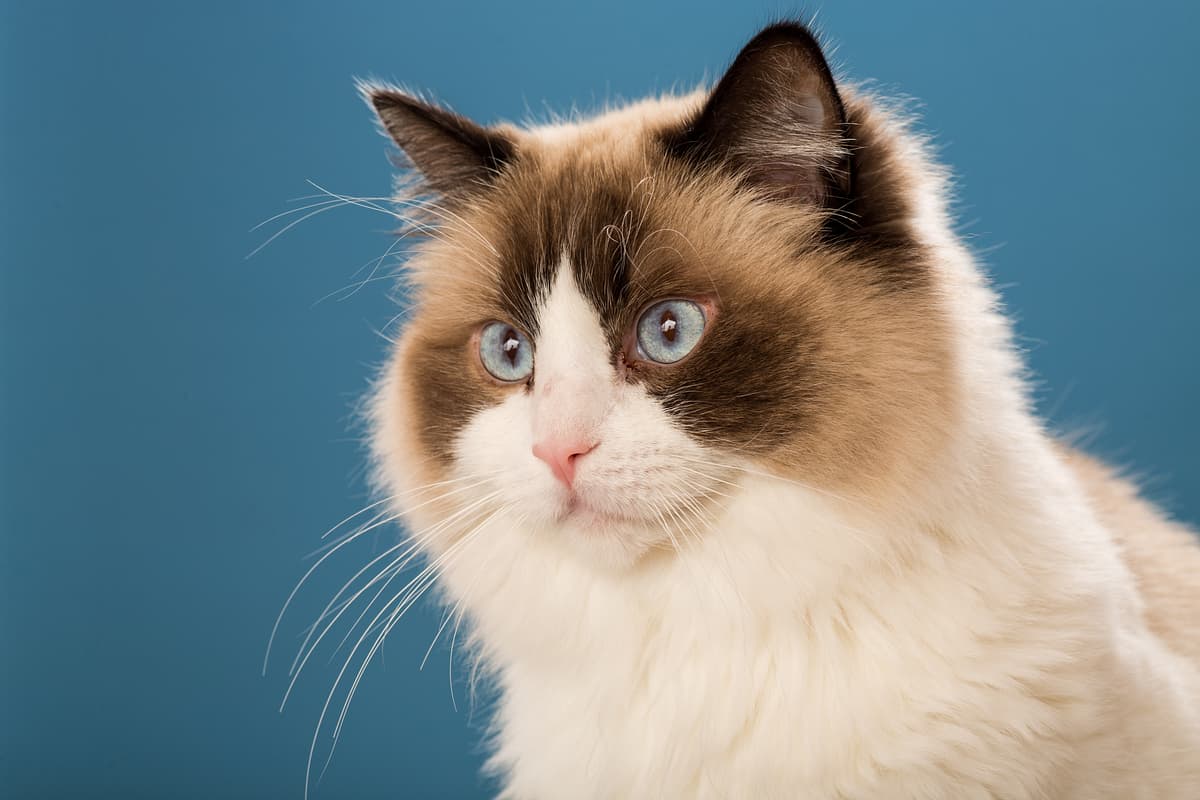LaPerm vs Ragdoll
Discover the differences between LaPerm and Ragdoll to make the best choice for your situation.
Try different breeds

LaPerm
Curly-coated, affectionate, and playful, this breed loves interactive companionship and adapts well to family life. Known for their sociable nature, LaPerms bring warmth to any home.

Ragdoll
Gentle, affectionate, and known for their striking blue eyes, Ragdolls thrive as loving companions. Their relaxed nature makes them perfect for families and those seeking a calm feline friend.
Quick comparison
Medium
3.5–5.5 kg
Curly, soft
12–16 years
2.5–4.5 kg
Moderately active
Large
6–9 kg
Longhaired, silky
12–16 years
4–6 kg
Low activity needs
Personality & behavior
Compare the personality traits and behavioral characteristics of both breeds.
LaPerm
Affectionate and enjoys close contact with people
Learns routines and interactive toys quickly
Active but settles calmly when needed
Loves games and interactive play sessions
Adjusts well to new people and environments
Ragdoll
Affectionate and gentle with people and children
Learns routines and simple tricks quickly
Prefers lounging over frequent active play
Enjoys interactive toys in short sessions
Adjusts well to new environments and changes
Care needs
Exercise, grooming, and daily care requirements
LaPerm
Hypertrophic cardiomyopathy, patellar luxation
Ragdoll
Hypertrophic cardiomyopathy, bladder stones
Suitability
How well each breed fits different living situations and families
LaPerm
Great choice
LaPerms are friendly, adaptable, and easy to handle for inexperienced cat owners.
Very suitable
They adjust well to smaller spaces and do not require large areas to thrive.
Good match
Their playful, interactive nature fits well with active households that can engage them.
Family friendly
They are gentle, tolerant, and generally patient with respectful children.
Highly compatible
LaPerms tend to get along with other cats and friendly dogs if introduced properly.
Not ideal
They crave companionship and can become lonely or stressed if left alone too much.
Ragdoll
Highly suitable
Gentle temperament and easygoing nature make Ragdolls easy for beginners to manage
Perfect fit
Ragdolls adapt well to smaller spaces and are generally quiet and calm indoors
Not ideal
They are not especially energetic and may not match fast-paced or highly active lifestyles
Great choice
Their tolerant and patient nature makes them safe companions for families with young children
Very friendly
Ragdolls are sociable and typically get along well with other pets in the household
Prone to anxiety
They dislike being left alone for long periods and may develop stress or behavioral issues
Breed strengths
What each breed excels at and their best qualities
LaPerm
- Affectionate with family members
- Adaptable to new environments
- Low-shedding curly coat
- Playful and interactive personality
- Generally healthy breed
Ragdoll
- Gentle and calm temperament
- Tolerant of handling and children
- Typically gets along with other pets
- Low tendency for aggression or scratching
- Affectionate and enjoys human company
Challenges & considerations
Potential challenges and considerations for each breed
LaPerm
- Needs regular coat maintenance
- May seek constant attention
- Prone to boredom if left alone
- Sensitive to cold temperatures
- Can be vocal and demanding
Ragdoll
- Prone to certain genetic heart conditions
- Requires regular grooming for long coat
- May develop obesity without exercise
- Slow to mature, both physically and emotionally
- Not suited for unsupervised outdoor life
Ready to choose your perfect breed?
Learn more about each breed or compare other breeds to find the perfect match for your lifestyle.
Discover more helpful tools
Make use of our other free tools to get the most out of your pet experience
